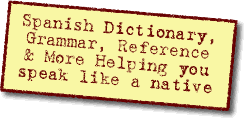Ask a Question(Create a thread) |
|
|||||||
Trying to Understand Direct + Indirect Object PronounsGrammar questions– conjugations, verb tenses, adverbs, adjectives, word order, syntax, etc. |
 |
|
|
Thread Tools |
|
#1
|
|||
|
|||
|
Trying to Understand Direct + Indirect Object Pronouns
Direct and Indirect object pronouns are without a doubt the most (and only) confusing thing I have come across since I started studying Spanish. Just wondering if anyone has any basic rules (or a website that lists rules) to live by when using these pronouns. I'm ok with reading them, but when forming sentences I get confused as to whether I should be using le vs. lo.
I understand that when to "L" pronouns are used together the first one becomes se....BUt what if the only word used is se? As in ¿Cuándo se graduó Jorge? Here is translates to "is"... But why use se instead of está? Also...when two pronouns are used together, such as "se lo", is it safe to assume that the first one, "se", is referring to a person and the second referring to a thing? ¡Muchos Gracias por tu ayuda! |
|
Get rid of these ads by registering for a free Tomísimo account.
|
|
#3
|
||||
|
||||
|
To add to Rusty's excellent comments: the indirect object pronouns in Spanish sometimes have a broader meaning than the English equivalent. "To whom" or "to what" is perhaps the most common question that they answer. Sometimes they answer a different question (for whom/what, from whom/what, of whom/what, etc); however, as Rusty says, only the direct object pronoun answers the question "what" or "whom".
|
|
#4
|
||||
|
||||
|
I agree with answers given. I only add a little note: "Gracias" is feminine, so it's never "muchos", but "muchas gracias".

__________________
♪ ♫ ♪ Ain't it wonderful to be alive when the Rock'n'Roll plays... ♪ ♫ ♪ |
|
#5
|
|||
|
|||
|
Rusty's point about asking if it's "what" and then a direct object (la[s]/lo[s]) or "to whom/what" and then an indirect object (le[s]) is grammatically correct, so you won't go wrong. But if you hear "le" where you think it should be a direct object (Puedo ayudarle, for example) it might be because many speakers use "le" for direct objects that are people. I think this is technically grammatically incorrect but increasingly accepted in grammar (others may know more)--it's "leísmo." It's especially common in Spain, I think.
|
 |
«
Previous Thread
|
Next Thread
»
| Link to this thread | |
|
|
|||||||
 Similar Threads
Similar Threads
|
||||
| Thread | Thread Starter | Forum | Replies | Last Post |
| Can you help me with Spanish direct and indirect object pronouns? | spanishmom | Practice & Homework | 5 | May 13, 2012 06:00 PM |
| Using Indirect and Direct Object Pronouns Together | Elizabeth | Grammar | 3 | August 13, 2009 11:09 AM |
| direct and indirect object pronouns | gramatica | Vocabulary | 2 | January 16, 2008 06:27 PM |
| direct object pronouns and indirect object pronouns | Twitchy11 | Grammar | 3 | September 29, 2007 12:37 PM |
All times are GMT -6. The time now is 02:41 PM.






